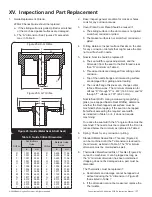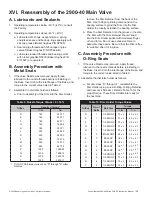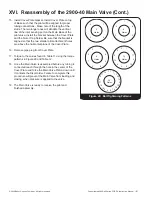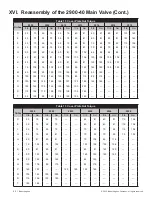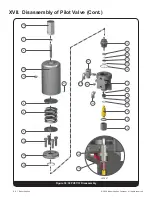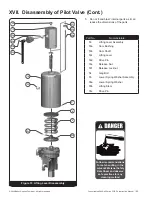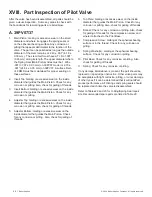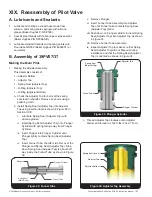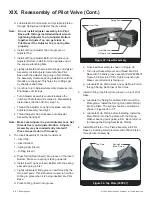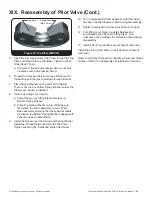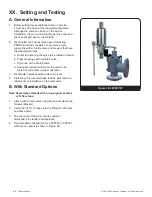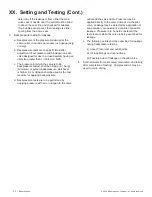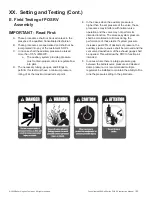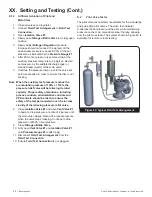
Consolidated 2900-40 Series POSRV Instruction Manual
| 51
© 2020 Baker Hughes Company. All rights reserved.
XX. Setting and Testing (Cont.)
C. With Sensing Ring Option
Remote sensing is the standard pressure connection to
the pilot valve used on the 2900-40 Pilot Operated Safety
Relief Valve. However with the Sensing Ring Option, the
pilot valve pressure can be picked up just before the inlet
of the main valve.
The gaskets which are supplied by the customer are to be
inserted between the Valve Nozzle and the Sensing Ring
and between the Sensing Ring and the test system flange.
D. Functional Testing
ATTENTION!
!
Filter in sensing tube to be removed if the following filter
options are utilized.
1. Repeat set point verification tests 3 times.
a. Inlet pressure ramp guidelines.
(i) When set pressure is below or equal to 750 psig
(51.7 barg), the inlet pressure ramp should not
exceed 0.5 psig (0.03 barg), per second, when
test pressure is within 90% of set pressure.
(ii) When set pressure is above 750 psig (51.7
barg), the inlet pressure ramp should not
exceed 1.0 psig (0.07 barg) per second, when
test pressure is within 90% of set pressure.
c. Drop system to 90% of set pressure between
cycles.
d. The 3 tests should be within the tolerances listed in
Table 15.
e. If blowdown is being checked, the following
guidelines are to be followed.
Note: Blowdown can be set and checked on the main
valve only if the system can achieve 10% over
pressure.
(i) 39PV model (gas/steam): less than or equal to
5% or 3 psig (0.20 barg), whichever is greater.
(ii) 39PV model (liquid): between 7% and 4%. If set
pressure is less than 30 psig (2.1 barg), 3 psig
(0.20 barg), or less.
Note: Customer requirements may note a variation
to the standard blowdown. Customers request
takes priority.
CAUTION
Do not adjust blowdown, compression screw, or adjuster
while pilot is pressurized.
f. If adjustments are necessary, adjust Compression
Screw or Adjuster and retighten corresponding lock
nut. Starting position of adjuster shall be 8 turns.
Retest beginning at step 9.
2. Main valve equipped with metal seats and steam as
the test media.
a. Leak tightness shall be checked visually using
a black background. There shall be no visual or
audible leakage after the interior or the valve is
allowed to dry after popping. The leak test pressure
shall be when pressure is held at 4% below valve
set pressure or 2 psig (0.14 barg), whichever is
greater.
b. Increase pressure from 90% of set pressure to
4% below set pressure or 2 psig (0.14 barg),
whichever is greater, and check all ports and
connections for leakage on Pilot and Main Valve.
c. Repair of valves which show leaks in backpressure
testing may be attempted by tightening the joint
involved to normal tightness, while the valve is in
the testing area. The valve is to be examined for
cause of failure, the cause corrected, and the test
repeated.
d. To isolate leakage that may be coming from the
pilot, disconnect the pilot vent line (if applicable)
from the main base outlet and plug the main valve
outlet connection. If wet paper still bulges, then
leakage is occurring from main valve.
e. Leakage from main valve can come from either
the main valve seat, nozzle seal or dome seal. To
Figure 39: with Optional Line Filter

